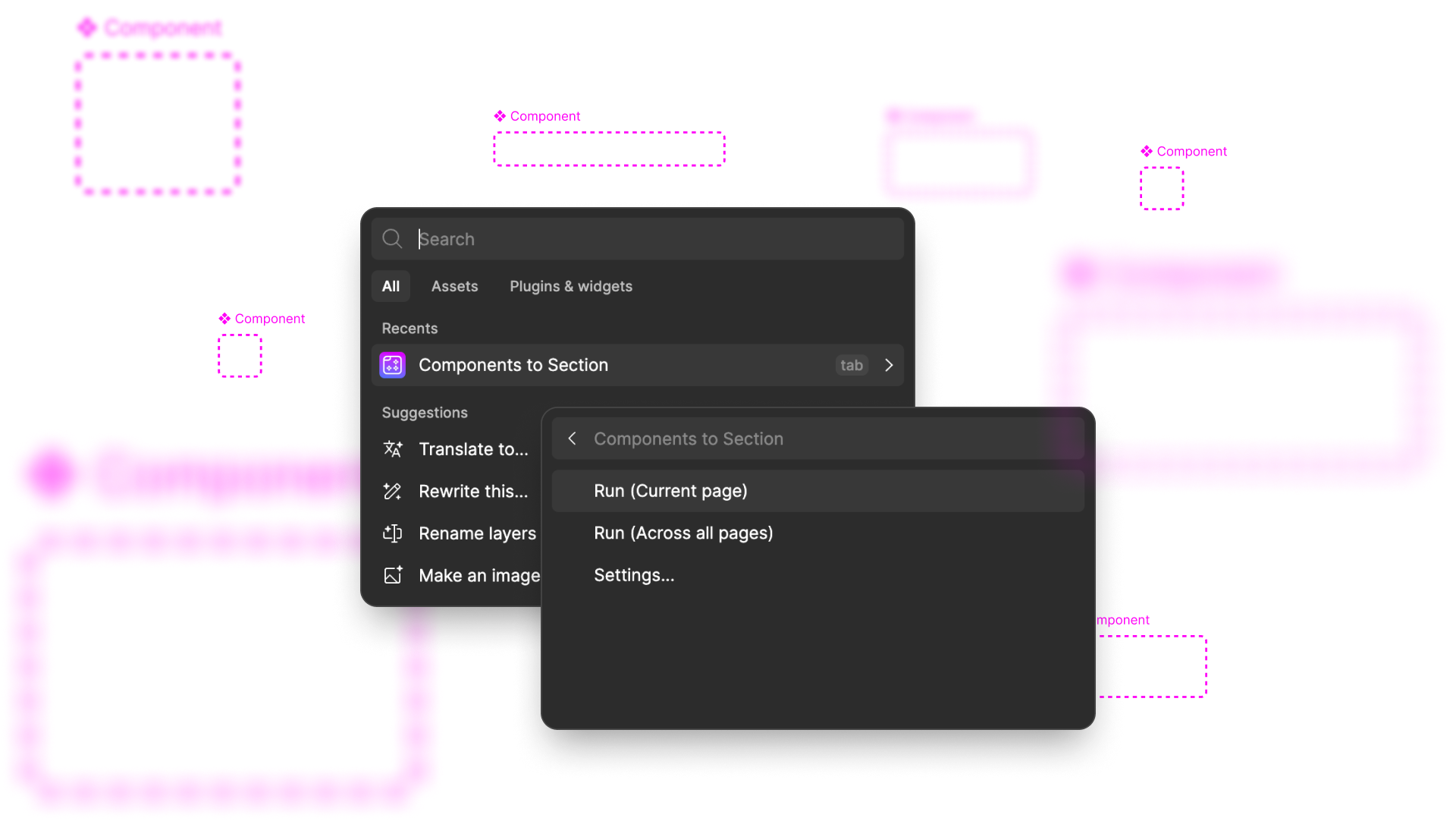Building a Simple Yet Powerful Figma Plugin to Organize Components
As a designer, managing a large number of components across multiple pages in Figma can quickly become overwhelming. That’s why I built a Figma plugin called Component to Section—to help streamline the process of organizing components into a neat, easily accessible section, improving workflow and keeping files more manageable.
The Inspiration Behind the Plugin
The motivation for creating this plugin came from a common problem faced by design system managers and teams working with large Figma files: organizing and maintaining components across different pages. When multiple people are working on the same file, it's easy for components to get scattered or lost, making it difficult for everyone to find what they need. I wanted to solve this by building a tool that automatically collects all the components—whether created by me or by others—and groups them in one place.
The Development Process
Building this plugin was a learning experience for me. Although I don’t have a formal engineering background, I leveraged my passion for coding and a lot of online resources like Stack Overflow and ChatGPT to break down the development process into manageable steps. The first step was figuring out how to identify and gather all master components across pages. Then I used the Figma API to create a grid layout where these components could be grouped and accessed more easily.
One of the challenges was learning JavaScript and navigating through the complexities of the Figma API. I found that leveraging AI prompts for coding assistance was useful but required a careful approach to avoid bloated or inefficient code. Over time, I learned to refine and simplify the logic, breaking down tasks into smaller, more manageable increments.
Core Features and Workflow Benefits
The Component to Section plugin has a simple interface, designed for efficiency rather than aesthetics. It’s triggered through Figma’s command palette, where you can quickly type “Component to Section” and choose whether to organize components on the current page or across all pages.
Once activated, the plugin gathers all master components and groups them into a neat grid layout, making it easy for everyone in the file to find and use them. This is especially helpful in collaborative environments, where maintaining consistency and accessibility of components is crucial. Future updates could include renaming components, reordering them alphabetically, and adding more customization options like visual tweaks and color choices.
Optimizing the Workflow
The plugin has proven to be a game-changer in my own workflow, but I believe its true potential lies in regular use. The more often you run the plugin, the more organized your files become, preventing clutter from building up. The key takeaway is not to wait until your components are scattered all over the place before running the tool—keeping things tidy from the start is the best approach.
Lessons Learned and Future Improvements
Building this plugin taught me a lot about coding and software development, especially around leveraging AI tools to make my code more efficient. If I were to do it differently next time, I’d break things down even further to keep the logic simple and under control.
Looking ahead, I plan to optimize the plugin’s speed and add features like renaming components, allowing for visual customization, and maybe even offering a documentation feature. While building ideas is easy, making them work in the real world takes time and iteration.
Advice for Aspiring Plugin Developers
If you’re a designer or developer looking to create your own Figma plugins, my advice is simple: don’t be intimidated by the process. With the right resources and a commitment to learning, it’s possible to bring your ideas to life. Focus on finding a useful problem to solve, and dive into building—skills can always be learned along the way.e
